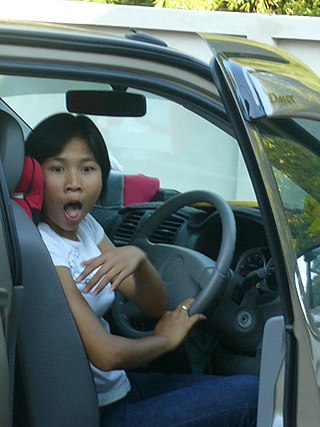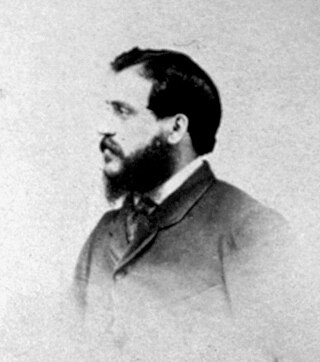Related Research Articles

Eadweard Muybridge was an English photographer known for his pioneering work in photographic studies of motion, and early work in motion-picture projection.

Photojournalism is journalism that uses images to tell a news story. It usually only refers to still images, but can also refer to video used in broadcast journalism. Photojournalism is distinguished from other close branches of photography by having a rigid ethical framework which demands an honest and impartial approach that tells a story in strictly journalistic terms. Photojournalists contribute to the news media, and help communities connect with one other. They must be well-informed and knowledgeable, and are able to deliver news in a creative manner that is both informative and entertaining.

Roger Fenton was a British photographer, noted as one of the first war photographers.

Chronophotography is a photographic technique from the Victorian era which captures a number of phases of movements. The best known chronophotography works were mostly intended for the scientific study of locomotion, to discover practical information for animal handlers and/or as reference material for artists. Although many results were not intended to be exhibited as moving pictures, there is much overlap with the more or less simultaneous quest to register and exhibit photographic motion pictures.

A snapshot is a photograph that is "shot" spontaneously and quickly, most often without artistic or journalistic intent and usually made with a relatively cheap and compact camera.

War photography involves photographing armed conflict and its effects on people and places. Photographers who participate in this genre may find themselves placed in harm's way, and are sometimes killed trying to get their pictures out of the war arena.

James Robertson (1813–1888) was an English gem and coin engraver who worked in the Mediterranean region, and who became a pioneering photographer working in the Crimea and possibly India. He is noted for his Orientalist photographs and for being one of the first war photographers.

The painter Francis Bacon was largely self-taught as an artist. As well as other visual artists, Bacon drew inspiration from the poems of T. S. Eliot, Ezra Pound and Yeats, the plays of Aeschylus, Sophocles and Shakespeare; Proust and Joyce's Ulysses.

Felice Beato, also known as Felix Beato, was an Italian–British photographer. He was one of the first people to take photographs in East Asia and one of the first war photographers. He is noted for his genre works, portraits, and views and panoramas of the architecture and landscapes of Asia and the Mediterranean region. Beato's travels gave him the opportunity to create images of countries, people, and events that were unfamiliar and remote to most people in Europe and North America. His work provides images of such events as the Indian Rebellion of 1857 and the Second Opium War, and represents the first substantial body of photojournalism. He influenced other photographers, and his influence in Japan, where he taught and worked with numerous other photographers and artists, was particularly deep and lasting.

The Horse in Motion is a series of cabinet cards by Eadweard Muybridge, including six cards that each show a sequential series of six to twelve "automatic electro-photographs" depicting the movement of a horse. Muybridge shot the photographs in June 1878. An additional card reprinted the single image of the horse "Occident" trotting at high speed, which had previously been published by Muybridge in 1877.

Thomas Starling Sullivant was an American cartoonist who signed his work T. S. Sullivant. His work appeared most frequently in the pages of the humorous Life magazine. Best known for his animal and ethnic caricatures, he also drew political cartoons and comic strip toppers, and illustrated children's books. He drew in a heavily cross-hatched pen-and-ink style, with humans and animals depicted with greatly exaggerated features that are nevertheless firmly rooted in his understanding of correct anatomy.

Barbara Blondeau (1938–1974) was an American experimental photographer active in the mid-1960s through the early 1970s. In her career as a photographer, she worked in a wide variety of materials, process and formats, although she is best known for her strip prints which she stumbled upon while shooting with a malfunctioning camera.

Mary Fenton alias Mehrbai was the first Gujarati, Parsi and Urdu theatre actress of European origin. Born to an Irish soldier in the British Indian Army, she fell in love and married Parsi actor-director Kavasji Palanji Khatau. He introduced her to acting and she had a successful stage career.
Phillip Prodger is a museum professional, curator, author, and art historian. He is the Senior Research Scholar at the Yale Center for British Art and formerly served as Head of Photographs at the National Portrait Gallery, London. Born in Margate, Kent, he currently resides outside of New Haven, Connecticut.

Photography in India refers to both historical as well as to contemporary photographs taken in modern-day India.

Animal Locomotion: An Electro-photographic Investigation of Consecutive Phases of Animal Movements is a series of scientific photographs by Eadweard Muybridge made in 1884 and 1885 at the University of Pennsylvania, to study motion in animals. Published in July 9, 1887, the chronophotographic series comprised 781 collotype plates, each containing up to 36 pictures of the different phases of a specific motion of one subject.
Events in 1885 in animation.
Events in 1884 in animation.
Events in 1882 in animation.
References
- ↑ "Fenton Crimean War Photographs". U.S. Library of Congress. Retrieved 5 February 2018.
- ↑ "Crimean War: First Conflict to Be Documented in Detail by Photography". Vintage Works Ltd. Archived from the original on 2014-01-12. Retrieved 2014-01-12.
- ↑ Prodger, Phillip; Gunning, Tom; Art, Cleveland Museum of (2003). Time Stands Still: Muybridge and the Instantaneous Photography Movement. Iris & B. Gerald Cantor Center for Visual Arts at Stanford University. ISBN 978-0-19-514964-7.
- ↑ "Aberdeen Press and Journal". 1858-10-13.
- ↑ Nancy 1987, p. 12-13.
- ↑ Hansen, Kathryn (1 December 2013). Stages of Life: Indian Theatre Autobiographies. Anthem Press. pp. 10, 16, 19, 292, 338. ISBN 978-1-78308-068-7.
- ↑ Hansen, Kathryn (1998). "Stri Bhumika: Female Impersonators and Actresses on the Parsi Stage". Economic and Political Weekly. 33 (35): 2291–2300. JSTOR 4407133 – via Academia.